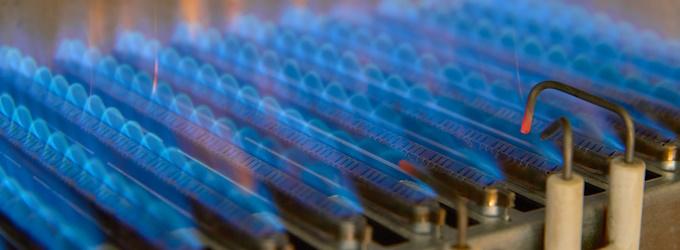Did You Know You May Not Have One If Your Gas Furnace Installation Was Recent?
Having a basic understanding of how your heating system works can help you determine when you need professional help with furnace repair or maintenance. The average person, however, doesn’t understand all the intricacies and nuances of how furnaces work.
Fortunately, local HVAC experts can help you get to know your system. Keep reading to learn more about pilot lights, and discover why your gas furnace may not have the kind you expect.
Pilot Lights Are Part of Gas Furnaces
If you have a gas furnace in your St. Louis home, then it’s likely that it has a pilot light, a small flame located in the combustion chamber. If your heating system runs on electricity, it won’t have a pilot light.
Pilot Lights Are Ignition Sources for Your Burners
The pilot light provides the flame (or electrical spark) needed to light the gas coming out of the main burner of your furnace.
When your heating system kicks on, a valve releases gas into the burner, and the pilot light ignites it. Without a pilot light, your gas furnace would be unable to operate and heat your home.
Newer Furnaces Have Electric Starters Instead
Starting in the early 1980s, pilot lights started being phased out of gas furnaces. You cannot buy a new furnace with a conventional pilot light, so if you have had a recent furnace installation, you won’t have one.
However, homes with uncommonly old heating systems might still have a pilot light. Instead, modern furnaces use hot surface ignition or direct spark ignition to ignite the burners.
Your Conventional Furnace Light Doesn’t Randomly Go Out
If your conventional pilot light has gone out, but your furnace is in otherwise good working order, environmental factors may be the culprit. Check for any drafts that could blow it out and remedy them before attempting to relight your pilot light.
Conversely, your newer furnace has an electric intermittent pilot that turns on only when the gas valve is open.
Yes, You Can Relight It
You can manually relight a conventional pilot light if necessary, but if you aren’t comfortable doing it, contact an HVAC professional. In fact, it’s always better to seek help from an expert rather than attempting any furnace repairs on your own without training. An HVAC technician can help you with your electric pilot.
If You Smell Gas, Don’t Attempt to Reignite Your Furnace Pilot Light
Natural gas includes an odor additive called mercaptan. Otherwise, it wouldn’t have a smell at all. With the additive, most people describe gas as smelling like sulfur or rotten eggs.
That said, if you smell gas, don’t attempt to light your old furnace’s pilot light. In fact, avoid creating any open flames that may ignite a gas leak.
Instead, if you smell a gas leak in your home, go outside. Call your local gas company immediately. They will send out a team to verify that your home and the surrounding area is safe. Don’t go back inside your house until the gas company says it’s safe to do so.
You Can Find Pilot Lights on Other Home Appliances
Pilot lights or electric ignitions aren’t only found on gas furnaces. Other household appliances also use them. These can include gas-powered water heaters, gas fireplaces, or gas cooking stoves.
They Have Blue Flames
Pilot lights and burners should always produce a blue flame. If your gas appliance is producing a red or a yellow flame, then you should seek professional furnace repair or service as soon as possible. A flame of any other color can indicate a problem with your heating system.
All of Them Rely on a Thermocouple
Regardless if your system has a conventional pilot light or electric ignition, its assembly relies on a thermocouple. The thermocouple serves as a safety feature. It senses heat from the pilot burner and opens the main gas valve. If there’s no heat, the thermocouple shuts off the main gas valve to prevent gas from building up.
Pilot Lights Require a Functioning Gas Valve to Work
You already know that pilot lights are only found on gas appliances, and you know that a pilot light relies on a thermocouple as a safety feature. But what happens if your gas valve or thermocouple aren’t working properly? Then it’s time for professional furnace repairs from a trained technician to prevent dangerous gas leaks in your home.
Not only can gas leaks cause explosions or ignite serious fires, but breathing in natural gas vapors can make you sick, including nose and throat irritation, nausea, vomiting, headaches, breathing problems, and confusion. So if you’ve noticed that either your conventional or your updated electric pilot light aren’t working, then it’s smarter and safer to contact a heating and cooling company in St. Louis to take a look for you.


